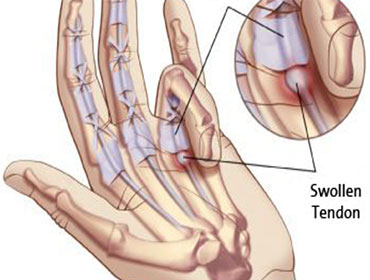Trigger Finger Release
Trigger finger develops when the tendons that flex your fingers become inflamed, producing finger soreness and pain. The condition restricts the movement of your finger and makes it tough to straighten and bend it.
The intensity of the symptoms determines the treatment options.
At-home treatments include:
- Taking a four- to six-week sabbatical from repeated tasks.
- Applying heat or ice to minimise swelling while wearing a brace or splint to restrict motion and rest the hand.
- Several times throughout the day, soak your hand in warm water to relax the tendons and muscles.
- Stretch your fingers gently to increase their range of motion.
Surgery Procedure:
If drugs and at-home therapies are ineffective, your doctor may suggest surgery. Outpatient surgery for trigger finger is performed by surgeons. Your surgeon will make a small cut in your palm and then cut the tightened tendon sheath after administering anaesthetic.
The area around the tendon sheath loosens up as it heals, allowing your finger to move more freely. Infection or inadequate surgical results are two dangers associated with surgery.
Recovery after surgery might take anywhere from a few weeks to six months. To reduce post-surgery stiffness, your doctor may recommend physical therapy activities. The tendon can usually move freely when the doctor releases the tendon sheath.

